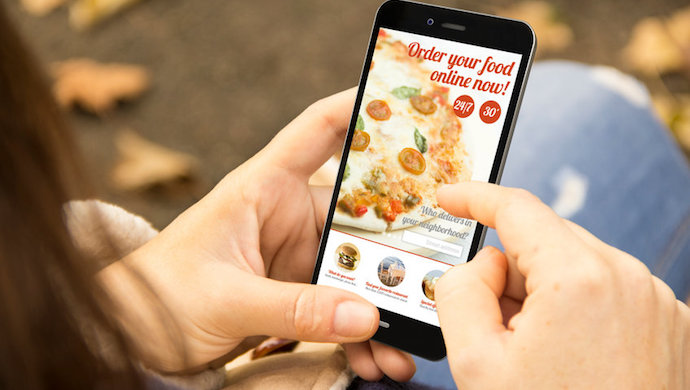
The pandemic interrupted businesses worldwide, with offline corporations, particularly restaurants, bearing the brunt of the worldwide lockdown. Despite the ease of restrictions, customers were too reluctant to dine out.
The global crisis has altered the user experience by balancing technology and authentic experiences and the customer’s role in the value chain. Market disruption has compelled restaurants to innovate and go digital in nearly every aspect of their operations.
The turning point in the food tech and online ordering space was the introduction of third-party delivery apps, also known as food aggregators. Consumers accustomed to doing everything online increasingly expected the same experience, convenience and transparency when ordering dinner.
Aggregators offer access to multiple restaurants through a single portal where consumers can opt for one-tap delivery, compare menus, prices, and reviews. The players in this category provide the logistics for the restaurant and are compensated by the restaurant with a fixed margin of the order.
While food aggregators give restaurateurs a good customer base and order volumes, paying commissions to aggregators takes away restaurants’ revenues. Also, the app owns customer data, not the restaurant.
While third-party apps offer restaurant delivery through their network, the last-mile delivery experience for the customer is still powered by the aggregator and not the restaurant.
Customer loyalty in the food industry is unparalleled to anything I’ve ever seen. Once you like food from a restaurant, you’ll end up ordering from them, no matter how difficult it is to order from them.
During the lockdown in Malaysia, a person got in a helicopter to get food from his favourite restaurant. Even on third-party aggregators, most orders that a restaurant receives are repeat orders.
Therefore, restaurants soon realised it’s not enough to digitise just the ordering process. Restaurants that are successful develop strong relationships with their customers. This compelled restaurants to invest in technologies that aid in building a solid customer bond and delivery automation.
Taking control of both sides of the experience– ordering and delivery have helped restaurants engage customers with their brand experience and boost direct business, allowing the company to become self-sufficient in order fulfilment, thus supporting customer loyalty.
Restaurants went digital by introducing new technologies to automate ordering, like progressive web apps (PWA) and SMS/Whatsapp ordering. PWAs are Web-based experiences that resemble mobile apps but do not require users to download anything.
A PWA for restaurants would display menus, enable selection, place orders, and pay. With SMS or WhatsApp ordering, users can place their orders through messaging apps. Restaurants use both these technologies and multiple CX tools to maximise customer engagement.
Also Read: The spotlight on foodtech: Why we believe that what we put on our plate will determine the future
And, for all of these techniques to work around each other, they must be linked to the restaurant’s existing point-of-sale (POS) systems. While traditional POS systems enable restaurant operations to perform smoothly, new-gen restaurant Operating Systems (OS) will proactively help restaurant owners to make insightful decisions using data and help provide a superior UX for their customers.
In the future, restaurants will become more and more dependent on an ever-changing digital ecosystem. Apps, services, and personal AI assistants will serve as the eateries’ primary contact points with their customers. AI will play a significant part in consumer decisions, and restaurants will require access to relevant and detailed data.
The data collected would be used to create new menus or implement real-time pricing based on supply and demand changes. With all this new digital ecosphere evolving, restaurants will be forced to adapt or build entirely new data collection methods and IT structures.
Also Read: Meet the 10 agritech, foodtech startups pitching for Future Food Asia’s US$100K grand prize
Virtual assistant platforms would be used as direct marketing channels for brands, with algorithms responding to price fluctuations and other data. Because of these large datasets available, consumers’ choices will become easier to determine and will effectively lower costs for restaurants, both acquiring cost per user and delivery cost per user.
Initially, technology apps were intended to serve as two-sided marketplaces, connecting customers and restaurants. They were concerned with being a resource, joining the two parties, and stepping aside.
However, the perimeter between technology and the physical world is now being infringed due to consumption shifting to the digital turf.
It has become more critical than ever for restaurants to build self-sustained capabilities and become truly autonomous.
–
Editor’s note: e27 aims to foster thought leadership by publishing views from the community. Share your opinion by submitting an article, video, podcast, or infographic
Join our e27 Telegram group, FB community, or like the e27 Facebook page
Image credit: georgejmclittle
The post The future of food tech lies in building digitally autonomous restaurants appeared first on e27.

